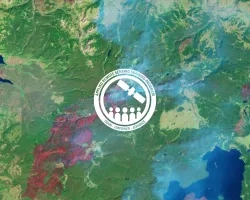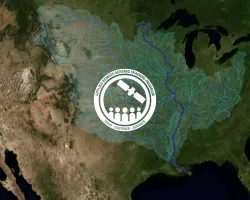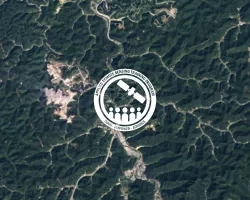Description
Water quality monitoring in coastal ocean estuaries and inland lakes is critical for ecosystems and fisheries management and safe drinking water. Remote sensing of water quality parameters has conventionally used data from multispectral sensors (e.g., Aqua-MODIS, Landsat-OLI, Sentinel-3 OLCI, Sentinel-2 MSI) with a limited number of spectral bands. There have been research missions with hyperspectral sensors (e.g., EO-Hyperion, HICO) that have demonstrated that hyperspectral data (bandwidth <10 nm) can capture more detailed information about water surface reflectance and enable the detection of a wide variety of water pollutants. Plankton, Aerosol, Cloud, ocean, Ecosystem (PACE), a new NASA mission, was launched on 8 February 2024. PACE – Ocean Color Instrument (OCI) collects global, hyperspectral observations for water quality monitoring.
This three-part introductory training will provide an overview of past and current hyperspectral sensors. Specifically, the training will provide information on NASA’s PACE mission, its sensors and data products, webtools to access data, and software for processing hyperspectral data and water quality parameters derived from PACE/OCI. The training will also highlight some advantages and limitations of PACE data. This will be the first ARSET training focusing on the use of hyperspectral data for water quality applications.
This training is also available in Spanish.
Prerequisites:
- Fundamentals of Remote Sensing
- Monitoring Coastal and Estuarine Water Quality: Transitioning from MODIS to VIIRS (Part 1)
- Overview of SeaDAS 8.4.1 for the Processing, Analysis, and Visualization of Optical Remote Sensing Data for Water Quality Monitoring
- NASA Earthdata Login
- Jupyter Notebooks and Python 3.X installed on your computer (optional)
By the end of this training attendees will be able to:
- Review the capabilities of past and current hyperspectral missions useful for water quality applications.
- Examine key characteristics of the new NASA PACE (Plankton, Aerosol, Cloud, ocean, Ecosystem) hyperspectral mission satellite and instruments including their advantages and limitations.
- Access, analyze, and visualize PACE level 2 and 3 data for water quality monitoring in selected areas of interest through using SeaDAS and Jupyter Notebook software.
- Assess the applicability of selected PACE level 2 and 3 water quality parameters to evaluate water quality in large bodies of water.
Local, State, and Federal Water Quality Managers, Fisheries Advisors, Aquaculture Managers, Freshwater and Coastal Ecosystems Managers, and Academic Researchers Working On Remote Sensing of Water Quality and Biogeochemistry.
- Three, 1.5-hour parts (September 25, October 2, October 9).
- Each part will have one session delivered in English (10:00-11:30 AM ET) and one identical session delivered in Spanish (2:00-3:30 PM ET).
- Those who attend all three live sessions and complete the homework will receive a certificate of completion.
ARSET Trainers: Amita Mehta
Guest Instructors: Antonio Mannino
Learning Objectives:
- Review past and current hyperspectral missions useful for water quality applications
- Identify key features of the NASA PACE hyperspectral mission satellite and instruments useful for monitoring water quality of large lakes and estuaries
- Identify advantages and limitations of using PACE/OCI data for water quality monitoring
Materials:
ARSET Trainers: Amita Mehta
Guest Instructors: Morgaine McKibben
Learning Objectives:
- Explore the current and planned PACE data products for water quality monitoring
- Identify how to access PACE/OCI level 1, 2, and 3 data
- Identify applications and the usability of PACE data for monitoring water quality
- Analyze and visualize available OCI Remote Sensing Reflectances and Level-2 and -3 water quality parameters using NASA’s open source SeaDAS software
Materials:
ARSET Trainers: Amita Mehta
Guest Instructors: Carina Poulin and Anna Windle
Learning Objectives:
- Access OCI Remote Sensing Reflectances and Level 2 and 3 Water Quality Parameters from EarthData using open source Python software/Jupyter Notebooks
- Visualize OCI Remote Sensing Reflectances and Level 2 and 3 Water Quality Parameters using open source Python software/Jupyter Notebooks
- Identify steps to customize the provided Jupyter Notebook software for other areas of interest and timeframes
Materials:



